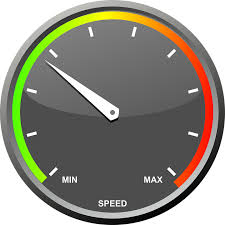Properly sizing a centrifugal pump is a crucial step in any plumbing system. There are some important variables and qualifiers you need to first identify in order to ensure that your plumbing system(s) reaches the desired output flow rates. Centrifugal pumps fall into a category of their own and need to be sized for various applications in a different manner than other pump families. In this post you will learn some basic steps to help you properly size a centrifugal pump for your application.
The Basics
Many pump users mistakenly think that a centrifugal pump will provide its maximum published flow rate in all applications.
However, unlike positive displacement pumps (gear, roller, diaphragm and others), the flow rate from a centrifugal pump will vary significantly depending upon the details of the suction and discharge piping and other "head losses" in the user's system (restrictions to flow such as elbows, tees, reducers, strainers, meters, valves, etc) and the vertical rise (or drop) from the supply source to the discharge point.
Total Static Head
The total vertical rise in the system is commonly referred to as Total Static Head. Total Static Head consists of both Static Suction Head and Static Discharge Head, and each of these can be positive or negative, depending if the supply source and discharge point are located above or below the pump elevation. Also note that some systems have a pressurized supply and/or discharge point (pressure vessel or pressurized pipe); these will also add to the Total Static Head.
Once calculated, static head doesn't change for a system - unless a plumbing change is made.
If that sounded a little technical it's because it is! Long story short - your centrifugal pump doesn't dictate your flow rate - your plumbing system does.

Think of it this way - the speedometer on your car may say 160mph, but is your car capable of that speed? What if you put on larger mud tires or constrict the exhaust? The car certainly will not reach 160mph - and a centrifugal pump operates under this same premise. Now, back to today's lesson:
Total Dynamic Head
In addition, each system has a Total Dynamic Head (TDH) which is the sum of head losses due to friction through each foot of pipe, all fittings, valves, meters, strainers, etc. The reason these frictional head losses are called "dynamic" is that they vary with the flow rate moving through the system. As the desired flow rate goes up, the Total Dynamic Head goes up, and usually quite quickly.
The Total Head in a pumping/piping system is the sum of Total Static Head and Total Dynamic Head. A "System Curve" can be computed, for a variety of desired flow rates, and plotted against the particular "Pump Curve". The Centrifugal Pump Curve is published by the pump manufacturer.
The "Operating Point" (Gallons Per Minute Flow rate) of the pump, in a particular system, is at the intersection of the Centrifugal Pump Curve and the Plumbing System Curve.
If this sounds complicated, do not be concerned. Dultmeier Sales has experienced engineers on staff, along with pump flow computer programs, to properly compute and size centrifugal pumps for your applications.
Simply give our engineering department a call with your flow rate requirements and some basic details on your piping system, and we will properly size your centrifugal pump to meet your requirements. You may wish to check out our Technical Library, as well. Let us know if there is any other way we can be of service.












